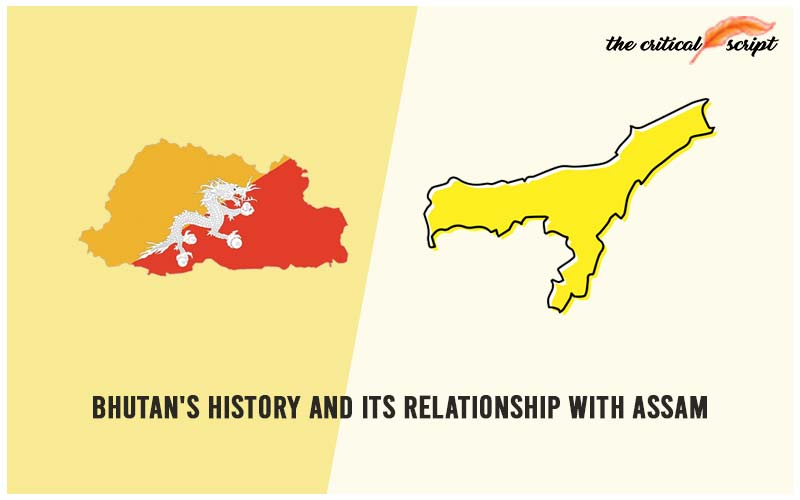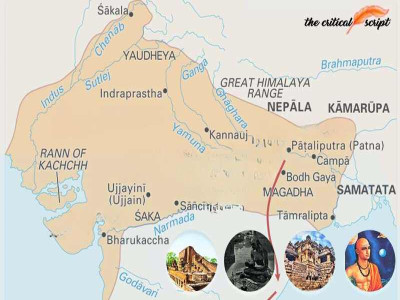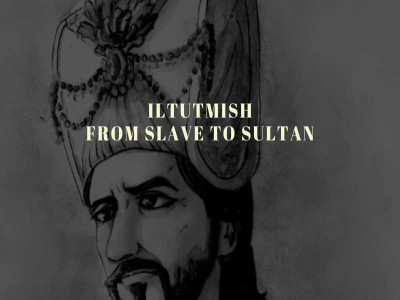
Bhutan's History and Its Relationship with Assam
The relationship between
Bhutan and Assam has a long and fascinating history, marked by periods of
mutual cooperation, cultural exchange, and at times, territorial disputes.
Situated along Bhutan’s southern border, Assam has been a crucial region for
Bhutan’s external relations, shaping their shared historical trajectory. From
ancient trade routes to modern diplomatic ties, Bhutan and Assam have been
interconnected in various ways.
Ancient and Medieval Connections:
Cultural and Religious Exchanges
The ties between Bhutan and
Assam can be traced back to ancient times when both regions were part of a
broader cultural and religious exchange network. Buddhism, a dominant religion
in Bhutan, played a significant role in this. Assamese culture, historically a
blend of Hinduism, Buddhism, and animistic practices, attracted Bhutanese monks
and scholars.
Trade
and pilgrimage routes were established, passing through Assam, connecting the Brahmaputra
Valley to the highlands of Bhutan. Bhutanese monks often traveled through Assam
on their way to the ancient learning centers of the Indian subcontinent,
particularly Nalanda University. These religious interactions reinforced the
cultural bonds between the two regions.
Medieval Period: Trade and
Political Engagement
As Bhutan began to unify
under the rule of ZhabdrungNgawangNamgyal in the 17th century, its relations
with Assam took on a more formalized structure. At that time, Assam was under
the rule of the Ahom dynasty, which had emerged as a powerful kingdom in the
region. The two regions engaged in both diplomatic and trade relations, with
Bhutan exporting goods like gold, wool, and silver and importing rice,
spices, and textiles from Assam.
The Dooars region,
located at the foothills of Bhutan, became the epicenter of Bhutan-Assam
relations, serving as a key trading route. However, it also led to territorial
disputes between the two regions, as control of these fertile plains was highly
sought after.
Conflict and Diplomacy:
Disputes Over the Duars
During the late 17th and
18th centuries, tensions rose between Bhutan and Assam over the control of the Duars,
fertile lowland areas critical for trade. Skirmishes and confrontations
occurred as both sides sought control over these strategic territories.
However, diplomacy prevailed on many occasions, and both the Bhutanese and Ahom
courts maintained diplomatic envoys to settle disputes and enhance trade.
Despite periods of
conflict, Bhutan continued to maintain its influence over key trade routes in
Assam, and the two regions benefited from the exchange of goods and ideas.
The British Period: Loss of
Territory and Shift in Relations
The relationship between
Bhutan and Assam took a significant turn in the 19th century with the arrival
of the British East India Company in Assam. After the fall of the Ahom dynasty
in 1826, Assam came under British control, and the British sought to assert
their influence over Bhutan’s frontier regions, particularly the Duars.
This culminated in the Duars
War of 1864-1865, after which Bhutan was forced to cede control of the Assam
Duars to the British under the Treaty of Sinchula. In return, Bhutan
received an annual subsidy. The loss of the Duars was a critical moment in
Bhutan’s history, as it reduced the kingdom’s influence in Assam and marked the
beginning of British dominance in the region.
Despite this loss, trade
continued between Bhutan and British Assam, with the British facilitating the
exchange of goods. Bhutan’s trade dependency on Assam for essentials like rice
and manufactured goods continued through the colonial period.
Modern Relations:
Post-Independence Diplomacy and Trade
After India gained
independence in 1947, Bhutan and Assam re-established their relationship within
the context of India-Bhutan diplomatic ties. The Indo-Bhutan Treaty of 1949
further strengthened Bhutan’s relationship with India, and Assam became a key
player in Bhutan’s economic exchanges with the broader Indian subcontinent.
Today, Assam serves as a
vital economic partner for Bhutan, facilitating the movement of goods and
services between the two regions. Bhutan imports food, fuel, and textiles from
Assam while exporting electricity to India through Assam’s transport corridors.
The shared border between Bhutan and Assam has allowed for a continuation of trade
and economic cooperation in the post-colonial era.
Cultural Continuity and
Environmental Collaboration
In addition to trade,
cultural ties between Bhutan and Assam have persisted. Festivals, traditions,
and religious practices in the border areas reflect a blend of Bhutanese and
Assamese cultures. Cross-border communities continue to share strong social and
familial bonds, fostering goodwill between the two regions.
In recent years, both
Bhutan and Assam have collaborated on environmental initiatives, given their
shared commitment to preserving biodiversity in the region. The rich forests
and wildlife that span the Bhutan-Assam border have led to joint conservation
efforts, addressing issues like deforestation, wildlife trafficking, and the
protection of endangered species.
Challenges and Future
Prospects
While Bhutan and Assam
share a history of cooperation, modern challenges such as cross-border
smuggling and illegal immigration occasionally strain relations. However, both
regions have worked together to resolve these issues diplomatically.
As Bhutan continues to
modernize and strengthen its economy, Assam remains an important partner in
trade and cultural exchange. Future prospects for enhanced cooperation between
the two regions include hydropower projects, sustainable development,
and continued collaboration on environmental conservation.
Conclusion
The relationship between
Bhutan and Assam has evolved through centuries of shared history, from ancient
cultural exchanges and trade routes to modern diplomatic and economic
cooperation. While conflicts have arisen, particularly over territorial control
of the Duars, the overall trajectory has been one of mutual benefit and
collaboration. Today, Bhutan and Assam continue to maintain strong ties,
ensuring that their historical relationship remains a foundation for future
partnership.
Disclaimer: The opinions expressed in this article are those of the author's. They do not purport to reflect the opinions or views of The Critical Script or its editor.

Newsletter!!!
Subscribe to our weekly Newsletter and stay tuned.

















Related Comments